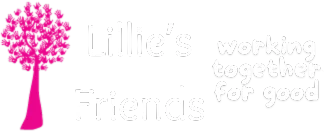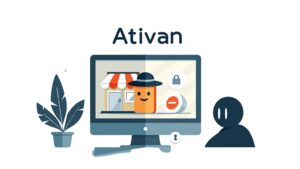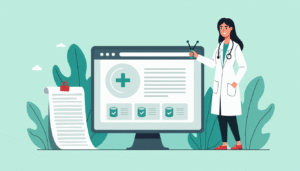- Each year, an estimated 400 000 kids and teens between the ages of 0 and 19 get cancer.
- Leukemias, brain cancers, lymphomas, and solid tumors like neuroblastoma and Wilms tumors are the most common kinds of cancer in children.
- More than 80% of children with cancer are treated in high-income countries where people have access to a wide range of services. Less than 30% of people are healed in low- and middle-income countries (LMICs).
- Cancer in children can’t usually be stopped or found through screening.
- Most cancers in children can be treated with generic drugs and other methods, such as surgery and radiation therapy. No matter how much money a family has, treatment for young cancer can be cost-effective.
- Avoidable deaths from childhood cancers in LMICs are caused by not being diagnosed, being misdiagnosed, or being diagnosed too late, having trouble getting care, giving up on treatment, dying from side effects of treatment, or relapsing.
- Only 29% of low-income countries say that most of their people have access to cancer treatments, while 96% of high-income countries say the same thing.
- We need data systems on childhood cancer to keep improving the level of care and help make policy choices.
Childhood cancers are cancers that primarily affect children and adolescents. They differ from adult cancers in terms of their types, causes, and treatments. Childhood cancers are relatively rare compared to adult cancers, but they can have a profound impact on the affected individuals and their families.
Here are some key points about childhood cancers:
Types of Childhood Cancers:
The types of cancers that occur in children are often different from those seen in adults. Common childhood cancers include leukemia (cancer of the blood), brain tumors, neuroblastoma (a cancer that forms in nerve tissue), Wilms tumor (a type of kidney cancer), retinoblastoma (a cancer of the eye), and various types of sarcomas (cancers of connective tissues like bones and muscles).
Causes:
The exact causes of childhood cancers are often unknown. Unlike some adult cancers that are linked to lifestyle and environmental factors, most childhood cancers are believed to result from genetic mutations that occur during early development. In some cases, there may be a genetic predisposition or familial link, but the majority of childhood cancers are sporadic.
Risk Factors:
While the specific causes are not always clear, some factors have been associated with an increased risk of childhood cancers. These factors can include certain genetic syndromes, exposure to ionizing radiation, certain environmental toxins, and a history of certain conditions in the child or the family.
Symptoms:
Childhood cancers can present with a variety of symptoms, which can vary based on the type of cancer. These symptoms may include unexplained weight loss, fatigue, persistent pain, changes in vision, unusual lumps or masses, frequent infections, and more.
Diagnosis:
Diagnosis of childhood cancers involves a combination of medical history, physical examination, imaging tests (such as X-rays, CT scans, and MRI), and laboratory tests (such as blood tests and biopsies). A definitive diagnosis is crucial for determining the appropriate treatment plan.
Treatment:
Treatment for childhood cancers often involves a combination of therapies, including surgery, chemotherapy, radiation therapy, and targeted therapy. The choice of treatment depends on the type and stage of cancer, as well as the overall health of the child.
Survival Rates:
Over the years, advances in medical research and treatment have improved the prognosis for many childhood cancers. It’s vary commonly depending on the type and nature of cancer. Some childhood cancers have high survival rates, while others are more aggressive and challenging to treat.
Long-Term Effects:
Survivors of childhood cancers may experience long-term effects due to the treatments they received. These effects can include issues with growth and development, fertility problems, heart and lung problems, secondary cancers, and more. Regular follow-up care is essential to monitor for and manage these potential late effects.
Psychosocial Impact:
Childhood cancer can have a profound psychological and emotional impact on both the child and their family. Supportive care services, including counseling, support groups, and educational resources, are important components of comprehensive care.
Research and Advocacy:
Organizations, researchers, and advocacy groups are dedicated to advancing the understanding and treatment of childhood cancers. Fundraising, awareness campaigns, and research efforts are aimed at improving outcomes and the quality of life for children affected by cancer.
It’s important to note that the information provided here is a general overview, and each case of childhood cancer is unique. If you or someone you know is dealing with childhood cancer, it’s recommended to consult with a medical professional who specializes in pediatric oncology for personalized guidance and support.
Certainly, I can provide some frequently asked questions (FAQs) about childhood cancers:
What is childhood cancer?
Childhood cancer refers to cancer that occurs in children and adolescents. It includes various types of cancer that affect different parts of the body, such as leukemia, brain tumors, lymphomas, and solid tumors.
How common is childhood cancer?
Childhood cancer is relatively rare compared to cancer in adults. It is the cause of a small number of cancer cases. However, it remains a significant health concern due to its impact on young lives.
What kinds of cancer are most common in children?
The most common types of childhood cancer include leukemia, brain and central nervous system tumors, neuroblastoma, Wilms tumor, and lymphomas.
What are the causes of childhood cancer?
Most cancers in children are still hard to figure out. Some genetic factors, exposure to certain environmental toxins, and possibly infections may play a role in their development.
What are the symptoms and signs of cancer in kids?
Symptoms can change from one type of cancer to another. Common signs include unexplained weight loss, fatigue, persistent pain, lumps or masses, frequent headaches or vomiting (especially in the morning), and changes in vision.
How is childhood cancer diagnosed?
Diagnosis often involves a combination of physical exams, blood tests, imaging studies (like X-rays or MRI), and sometimes biopsies to examine a tissue sample under a microscope.
What is the treatment for childhood cancer?
Treatment can include chemotherapy, radiation therapy, surgery, targeted therapies, and stem cell transplants. The treatment plan depends on the type and stage of cancer.
Are there support services for families of children with cancer?
Yes, many hospitals and cancer centers provide comprehensive support services for families, including emotional support, counseling, social workers, and resources to help navigate the challenges of childhood cancer.
Is childhood cancer curable?
Many childhood cancers are treatable, and the prognosis varies depending on the type and stage of cancer. Advances in medical research and treatment have improved survival rates for several childhood cancers.
Are there organizations dedicated to childhood cancer awareness and research?
Yes, there are numerous organizations globally focused on raising awareness about childhood cancer, supporting families, and funding research. Examples include St. Jude Children’s Research Hospital, the American Childhood Cancer Organization, and the Pediatric Oncology Group of Ontario.
Can childhood cancer be prevented?
Currently, there is no surefire way to prevent childhood cancer, as its causes are not fully understood. However, maintaining a healthy lifestyle, reducing exposure to environmental toxins, and ensuring timely medical care for any concerning symptoms can contribute to overall well-being.
Remember that information may have evolved. For the most current and accurate information about childhood cancers, please consult reputable medical sources and organizations dedicated to pediatric oncology.
Additional Information
- Improving outcomes of childhood cancer.
- Types of Treatment during childhood cancer.
- Treatment Side Effects in childhood cancer.
- Where Children with Cancer Are Treated.
- Children with Cancer: A Guide for Parents.











